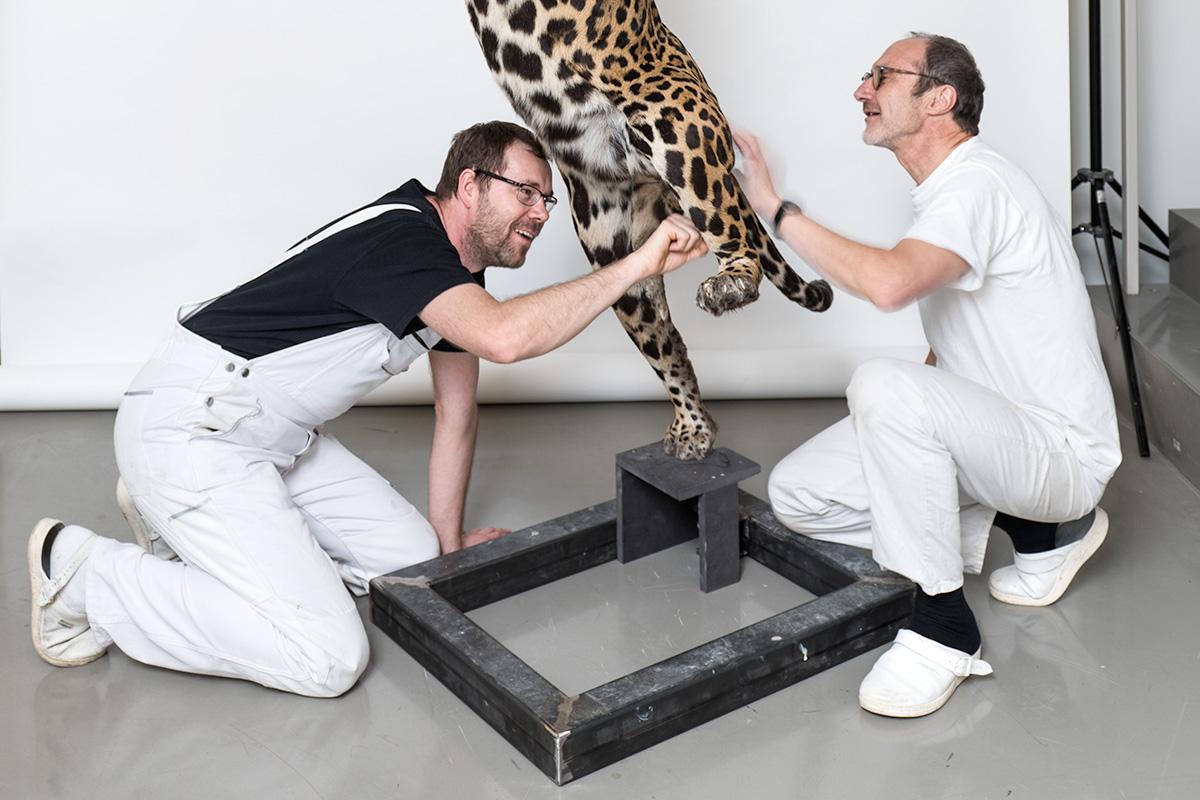An interview with Robert Stein and Jürgen Fiebig
The art of preparing models and taxidermies has a long tradition at the Museum für Naturkunde Berlin. In the 1930s, Alfred Keller experimented with early synthetic materials to make his insect models, while a new technique of preserving the fine structure of Bobby the Gorilla’s skin was developed that gave the animal a more natural facial expression.
In the context of the macaws exhibition, taxidermies of more than 55 specimens were prepared – most of them by Robert Stein und Jürgen Fiebig, who are both employed as Museum taxidermists and have won many prizes in international competitions for the life-like appearance of their taxidermies.
You were both a driving force behind this new exhibition – what made the idea of a macaw exhibition particularly exciting for you?
What we found particularly exciting is that macaws are a fascinating group of birds with a combination of interesting features. They come in spectacular plumage colours and include some of the largest parrots. The particular challenge in creating these taxidermies for us was to bring out two main characteristics of these birds convincingly – their extraordinary sociability and their amazing climbing abilities, including the use of their beaks.
Taxidermy is an art in itself – how is an exhibit actually created?
When preparing a bird, the first step is to skin it and remove all remains of muscles, fat and connective tissue. The skin with the feathers is then washed thoroughly and tanned to preserve it. An artificial body is made from foam, while the neck is made of wire and natural fibre. The size of the body must, of course match the original. Once the skin has been tanned, the feathers are blow-dried, the extremities stabilised with wire and artificial eyes inserted. Then the bird is mounted in the desired position and sewn up. The feathers are rearranged and the mounted bird left to dry, which can take several weeks. The finishing touches include colouring bare skin, legs and the beak, as these parts will lose their natural colour after the bird has died, in contrast to the feathers.
Visitors sometimes ask where the birds in the exhibition come from – where do you find rare species for exhibition purposes?
All new taxidermies originate from breeders and died a natural death. As some of the species are very rare indeed, we have been in contact with zoos, breeders, other natural history museums and taxidermists for many years, which helped us to put together a comprehensive collection.
Which exhibit is the most spectacular in your view – and why?
The most spectacular exhibit by far must be the leaping jaguar, trying to catch two two red-and-green macaws, as all three animals are caught in extreme motion. To reproduce this frozen motion convincingly, it is important to get anatomical details right. It was a particular challenge to deliver high quality in such a short time, so we decided to team up with two colleagues in Stuttgart and are considering to enter our collective work of art to the next European championship.
And finally – how do you become a taxidermist?
In Germany, taxidermists can currently train at vocational colleges only. This takes three years, after which you can gain more practical experience with a traineeship, for example in a museum. Producing high-quality, life-like exhibits requires a high degree of creativity and practical skills, and you should enjoy and be passionate about re-creating natural objects.
